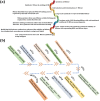MXene-Based Nanocomposites for Supercapacitors: Fundamentals and Applications
- PMID: 40302306
- PMCID: PMC12285631
- DOI: 10.1002/smtd.202401751
MXene-Based Nanocomposites for Supercapacitors: Fundamentals and Applications
Abstract
MXene-based nanocomposite materials with other 2D materials have made a large impact in the field of energy storage, particularly in the area of supercapacitors. Combining conductive 2D MXene with other 2D materials, such as transition metal oxide, transition metal dichalcogenides, and layered double hydroxide, improves the electrochemical energy storage properties of resulting MXene-based nanocomposites. The interface of MXene and 2D nanocomposite materials allows an improved electrochemical performance for energy storage applications. In this review, state-of-the-art research progress in 2D/2D MXene-based nanocomposite synthesis, structural and morphological properties, and electrochemical performance for supercapacitors is explored. 2D MXene nanocomposites electrochemical properties in terms of specific capacitance, energy, power densities, and stability are discussed. This study shows that this rapidly developing field has an important impact on the next-generation supercapacitor.
Keywords: 2D materials; MAX; energy storage.
© 2025 The Author(s). Small Methods published by Wiley‐VCH GmbH.
Conflict of interest statement
The authors declare no conflict of interest.
Figures







References
-
- Zhang X., Hou L., Ciesielski A., Samorì P., Adv. Energy Mater. 2016, 6, 1600671.
-
- Zhang P., Wang F., Yu M., Zhuang X., Feng X., Chem. Soc. Rev. 2018, 47, 7426. - PubMed
-
- Nasrin K., Sudarshan V., Subramani K., Sathish M., Adv. Funct. Mater. 2022, 32, 2110267.
-
- Pramanik A., Sengupta S., Saju S., Chattopadhyay S., Kundu M., Ajayan P., Adv. Energy Mater 2024, 2, 2401657.
Publication types
Grants and funding
LinkOut - more resources
Full Text Sources

